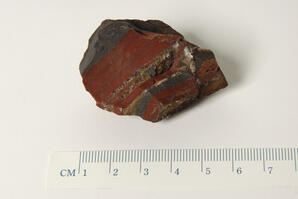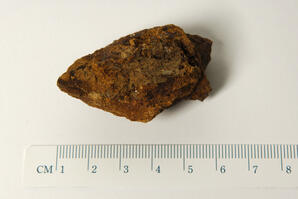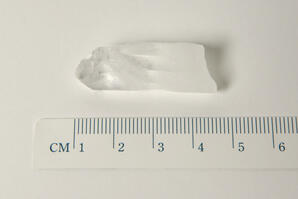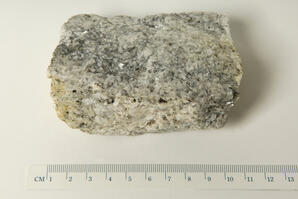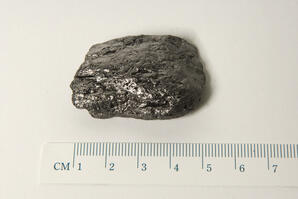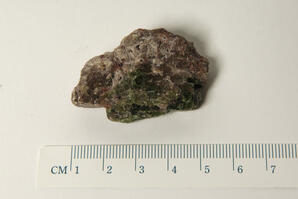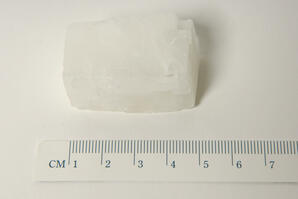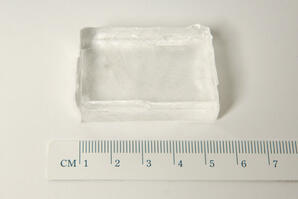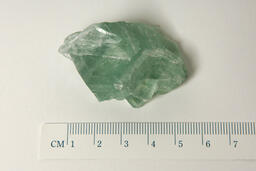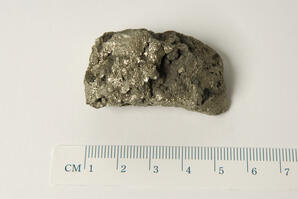Image
Common Forms/Occurrences: Mainly of sedimentary origin Useful Identification Test: May be attracted to a magnet after heating Chemical formula: Fe2O3 Crystal System: Thin tabular crystals or massive Colour: Silvery gray, black, or brick red Streak:…
Image
Common Forms/Occurrences: Always of secondary origin resulting from the alteration of other ores or minerals containing iron Useful Identification Test: Hard or soft; Chemical formula: Fe2O3 ? nH2O Crystal System: Amorphous masses Colour: Yellow…
Image
Common Forms/Occurrences: Occurs in large masses in veins and pegmatites Useful Identification Test: Insoluble in acids except HF; soluble in molten Na2CO3 Chemical formula: SiO2 Crystal System: Hexagonal prism and pyramids Colour: Usually…
Image
Common Forms/Occurrences: Found in sedimentary strata; Formed secondarily from limestone Useful Identification Test: Will not effervesce in cold dilute acids; Powdered dolomite will however effervesce in warm acids Chemical formula: CaMg(CO3)2…
Image
Common Forms/Occurrences: Principally occurs in metamorphic rocks ie. Crystalline limestones, schists, and gneisses or in hydrothermal veins Useful Identification Test: Opaque, relatively soft, non magnetic, and foliated Chemical formula: C Crystal…
Image
Common Forms/Occurrences: Widely distributed as accessory mineral (all classes of rocks) Useful Identification Test: Soluble in HNO3 or HCl Chemical formula: Ca5F(PO4)3 Crystal System: Hexagonal prisms Colour: Pale green or dark green, brown, blue,…
Image
Common Forms/Occurrences: Found in limestone, chalk, travertine, and onyx Useful Identification Test: Effervesces in dilute HCl Chemical formula: CaCO3 Crystal System: Prisms, rhombohedrons, or scalenohedrons that break into rhombohedrons Colour:…
Image
Common Forms/Occurrences: Occurs as extensive beds and irregular masses formed by evaporation of enclosed bodies of sea water Useful Identification Test: Salty taste; Chemical formula: NaCl Crystal System: Forms cubes and octahedrons Colour:…
Image
Common Forms/Occurrences: Widely distributed in mountian belts and deeply eroded shield areas of continental crust Useful Identification Test: Optically negative character and large optical axial angle and extinction angle Chemical formula: calcium…
Image
Common Forms/Occurrences: Found in ultramafic igneous rocks and marbles formed from metamorphosed limestone Useful Identification Test: Gelatinizes in HCl Chemical formula: (Fe,Mg)2SiO4 Crystal System: Short crystals that may resemble sand grains…
Image
Common Forms/Occurrences: Present in most igneous and both regional and contact metamorphic rocks Useful Identification Test: Transparent to translucent Chemical formula: K(Mg,Fe)3(Al,Si3O10)(OH,F)2 Crystal System: Very short prisms that split…
Image
Common Forms/Occurrences: Common K-feldspar of pegmatites and hydrothermal veins; Prominent in granites Useful Identification Test: Demonstrates "tartan" twinning Chemical formula: KAlSi3O8 Crystal System: Translucent prisms with…
Image
Common Forms/Occurrences: Common in dolomites and limestones Useful Identification Test: Soluble in H2SO4 with evolution of HF; slightly soluble in HCl Chemical formula: CaF2 Crystal System: Usually cubes Colour: Colourless, purple, blue, gray,…
Image
Common Forms/Occurrences: Found as blocky crystals in basalts, gabbro, and andesites Useful Identification Test: Insoluble in HCl Chemical formula: calcium ferromagnesian silicate Crystal System: Short, 8-sided prisms Colour: Dark green to gray…
Image
Common Forms/Occurrences: Found in alabaster, satin spar, and selenite Useful Identification Test: Soft; Shows better cleavage than talc Chemical formula: CaSO4 ? 2H20 Crystal System: Tabular crystals, prisms, blades, or needles Colour: Colourless,…
Image
Common Forms/Occurrences: Found near hot springs and volcanic regions Useful Identification Test: Identifiable odour when mixed with water (resembles rotton eggs) Chemical formula: S Crystal System: Transparent to translucent crystals or earthy…
Image
Common Forms/Occurrences: Igneous and metamorphic rocks Useful Identification Test: Lack of colour, low relief, and albite twinning Chemical formula: NaAlSi3O8 to CaAl2Si2O8 Crystal System: Striated tabular crystals or blades Colour: Colourless,…
Image
Common Forms/Occurrences: Common constituent of Precambrian iron-formations Useful Identification Test: Attracted to a magnet and can be magnetized Chemical formula: Fe3O4 Crystal System: Octahedrons Colour: Silvery gray to black Streak: Dark gray…
Image
Common Forms/Occurrences: Associated with galena and in hydrothermal veins in igneous rocks and contact metamorphic deposits Useful Identification Test: Soluble in HCl with evolution of H2S Chemical formula: ZnS Crystal System: Misshapen…
Image
Common Forms/Occurrences: Found in granites and pegmatites Useful Identification Test: Can be split into thin flexible transparent sheets Chemical formula: KAl2(Al,Si3O10)(OH,F)2 Crystal System: Short opaque prisms Colour: Colourless, yellow, brown…
Image
Common Forms/Occurrences: Secondary mineral formed by alteration of magnesium silicates (ie. Olivine and pyroxene) Useful Identification Test: Very soft to the touch, soapy feel Chemical formula: Mg3Si4O10(OH)2 Crystal System: Cryptocrystalline…
Image
Common Forms/Occurrences: In veins associated with other sulfide minerals Useful Identification Test: Decomposed by H2SO4 and by dilute HNO3 Chemical formula: PbS Crystal System: Forms cubes and octahedrons Colour: Silvery gray Streak: Gray to dark…
Image
Common Forms/Occurrences: Two groups classified as Pyralspite and Ugrandite Useful Identification Test: Soluble with difficulty in HF Chemical formula: complex silicate Crystal System: Dodecahedrons Colour: Usually red, black, or brown; sometimes…
Image
Common Forms/Occurrences: Found in hydrothermal deposits Useful Identification Test: Insoluble in HCl; When powdered soluble in strong HNO3 Chemical formula: FeS2 Crystal System: Cubes and octahedrons Colour: Brass yellow Streak: Dark gray Lustre:…

